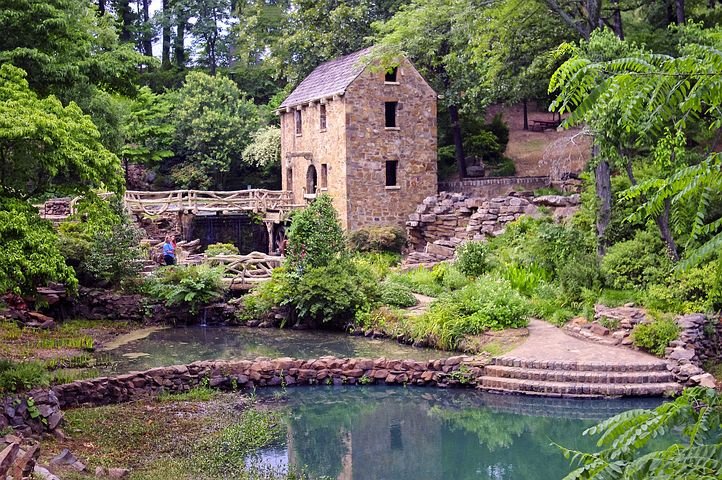Arkansas
Arkansas: The Landlocked Gem of Southern United States
The state of Arkansas, a landlocked jewel nestled in the south-central region of the Southern United States, boasts a rich history, diverse geography, and a culture that captivates. Its unique name, derived from the language of the Osage, a Dhegiha Siouan tribe, is a tribute to their kinsmen, the Quapaw people.
Geographic Diversity
Arkansas is famed for its geographic diversity, ranging from the mountainous regions of the Ozark and Ouachita Mountains, which form the U.S. Interior Highlands, to the densely forested terrain in the south known as the Arkansas Timberlands. The eastern lowlands along the Mississippi River, and the Arkansas Delta further enhance the state’s rich geographic tapestry.
The state shares its borders with Missouri to the north, Tennessee and Mississippi to the east, Louisiana to the south, and Texas and Oklahoma to the west. Ranking as the 29th largest by area and the 34th most populous state, Arkansas is home to more than 3 million people as per the 2020 census.
Metropolitan Hubs
The capital city and its most populous, Little Rock, serves as a hub for transportation, business, culture, and government. The northwestern corner of the state, inclusive of the Fayetteville-Springdale-Rogers Metropolitan Area and Fort Smith metropolitan area, is a significant population, education, and economic center. Jonesboro, the largest city in the eastern part of the state, and Pine Bluff, the largest city in the southeastern part, further contribute to the state’s urban landscape.

Historical Overview: From Territory to Statehood
Formerly part of French Louisiana and the Louisiana Purchase, it was admitted to the Union as the 25th state on June 15, 1836. The state’s early economy relied heavily on cotton plantations, with landowners largely depending on the labor of enslaved African Americans.
In 1861, Arkansas seceded from the United States and joined the Confederate States of America during the American Civil War. The state’s return to the Union in 1868 marked the continuation of economic struggles due to its heavy reliance on the large-scale plantation economy.
Struggles and Progress: The Late 19th Century
In the late 19th century, the state instituted various Jim Crow laws to disenfranchise and segregate the African-American population. White interests dominated Arkansas’s politics, with disfranchisement of African Americans and refusal to reapportion the legislature. It wasn’t until the passage of federal legislation that more African Americans were able to vote. During the civil rights movement of the 1950s and 1960s, Arkansas, and particularly Little Rock, were major battlegrounds for efforts to integrate schools.
Despite the struggles, Arkansas began to diversify its economy and see prosperity following World War II in the 1940s. The state became the base of the world’s largest company by revenue, Walmart, during the 1960s. In the 21st century, Arkansas’s economy is based on service industries, aircraft, poultry, steel, and tourism, in addition to important commodity crops of cotton, soybeans, and rice.

Culture and Notable Arkansans
The culture of Arkansas is observable in museums, theaters, novels, television shows, restaurants, and athletic venues across the state. The state has been home to many notable personalities, including politician and educational advocate William Fulbright, former president Bill Clinton, general Wesley Clark, Walmart founder Sam Walton, and singer-songwriters Johnny Cash, Charlie Rich, Jimmy Driftwood, and Glen Campbell.
How Did Arkansas Get Named
The name “Arkansas” was initially applied to the Arkansas River and is derived from a French term, “Arcansas”, their plural term for their transliteration of “akansa”, an Algonquian term for the Quapaw people. These were a Dhegiha Siouan-speaking people who settled in Arkansas around the 13th century.
Early History
Before European settlement of North America, Arkansas was inhabited by indigenous peoples for thousands of years. The first of these Europeans was Spanish explorer Hernando de Soto in 1541, who crossed the Mississippi and marched across central Arkansas and the Ozark Mountains.

Purchase and Statehood
Napoleon Bonaparte sold French Louisiana to the United States in 1803, including all of Arkansas, in a transaction known today as the Louisiana Purchase. French soldiers remained as a garrison at Arkansas Post. Following the purchase, the balanced give-and-take relationship between settlers and Native Americans began to change all along the frontier, including in Arkansas.
Civil War and Reconstruction
In the early antebellum Arkansas, the southeast Arkansas slave-based economy developed rapidly. On the eve of the American Civil War in 1860, enslaved African Americans numbered 111,115 people, just over 25% of the state’s population. Many politicians were elected to office from the Family, the Southern rights political force in antebellum Arkansas. Residents generally wanted to avoid a civil war. When the Gulf states seceded in early 1861, delegates to a convention called to determine whether Arkansas should secede referred the question back to the voters for a referendum to be held in August. Arkansas did not secede until Abraham Lincoln demanded Arkansas troops be sent to Fort Sumter to quell the rebellion there. On May 6, the members of the state convention, having been recalled by the convention president, voted to terminate Arkansas’s membership in the Union and join the Confederate States of America.
The reconstruction legislature established universal male suffrage, a public education system for blacks and whites, and passed general issues to improve the state and help more of the population. The State soon came under control of the Radical Republicans and Unionists and led by Governor Powell Clayton, they presided over a time of great upheaval as Confederate sympathizers and the Ku Klux Klan fought the new developments, particularly voting rights for African Americans.

Rise of the Jim Crow Laws and Early 20th Century
In the late 1880s, the worsening agricultural depression catalyzed Populist and third-party movements, leading to interracial coalitions. Following a controversy over allowing slavery in the territory, the Territory of Arkansas was organized on July 4, 1819.
In conclusion, the state of Arkansas, with its rich history, diverse culture, and geographic beauty, continues to be a fascinating study in resilience, growth, and transformation. From its indigenous beginnings to its present-day status as a thriving and diverse state, Arkansas’s journey is a testament to the enduring spirit of its people and the resilience of the human spirit.
